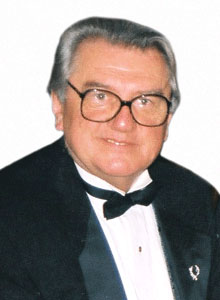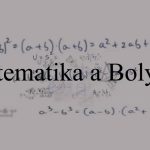Prékopa András akadémikus előadása: On the Relationship between the Bounding Discrete and Continuous Moment Problems
 Az előadás helyszíne és időpontja:
Az előadás helyszíne és időpontja:
- 2013. november 8., péntek 13:00 óra
- BBTE Központi Épület, 5/I-es Tiberiu Popoviciu-terem
On the Relationship between the Bounding Discrete and Continuous Moment Problems
Anh Ninh és Gabriela Alexe (Rutgers University) előadókkal közösen
Meghívott előadó
dr. Prékopa András akadémikus, az ELTE emeritus professzora és a Rutgers Egyetem (New Brunswick, New Jersey, AEÁ) egyetemi tanára
Absztrakt
In the second half of the nineteenth century, Chebyshev, Markov, Stieltjes and others started a new research area that we call today: Moment Problems. Moment problems today are formulated by the use of Chebyshev systems and higher order convexity and a number of famous mathematicians in Kolozsvár or Cluj: F. Riesz, T. and E. Popoviciu, among others, contributed to it important results. Right at the beginning the authors were looking at two different kinds of problems: 1. feasibility problems, where we look for conditions under which a given sequence of numbers can be represented as a moment sequence; 2. bounding problems, where we look for lower and upper bounds on linear functionals, acting on probability distributions, given the knowledge of a finite number of moments. In this lecture we will look at the second type problem, where we further distinguish between the discrete and continuous cases. In a discrete moment problem the support of the distribution is a known discrete set, while in the continuous problem the restriction of the support is that it is a finite or infinite interval. If the random variable involved is discrete, then this information helps us to obtain better bounds, than what we can get in the continuous case. Discrete Moment Problems (DMP) came to prominence by the discovery of the author (1988, 1990) that probability bounds of Boolean functions of events, based on some of the terms of the inclusion-exclusion formula (the binomial moments of the random variable equal to the number of events which occur), can be obtained as objective function values of suitable moment problems. These problems are LP’s and the optimum values can be obtained either by formulas or specially designed, efficient dual type algorithms. Linear programming had already been used to obtain special probability bounds by Kounias, Kwerel and Platz but now we have a general theory and solution methodology. Any probability bound, using binomial moments, is either a special case of it or the obtained bound is not sharp. Discrete moment problems have nice connections to a number of areas in mathematics. We will show that, in addition to probability bounds, close connection exists to logconcavity, combinatorics, theory of simplicial complexes, etc. The new methodology of DMP’s allows for the development of a new solution methodology of the continuous (or general) moment problem. We will show how the continuous Chebyshev-Markov and Markov-Krein inequalities can be derived by the use of DMP methodology. The main methodology of the DMP is based on the characterization theorems of dual feasible bases. We will present new theorems in this respect, involving some new objective functions in the moment LP’s. The use of these results, combined with special discretization, serve to solve the continuous problem. To make the presentation simpler we restrict ourselves to the cases of power and binomial DMP’s and their continuous counterparts. Finally, special numerical algorithms and computerized solution techniques will be presented, with applications, to show the usefulness and efficiency of the moment problems in a large number of applications.














